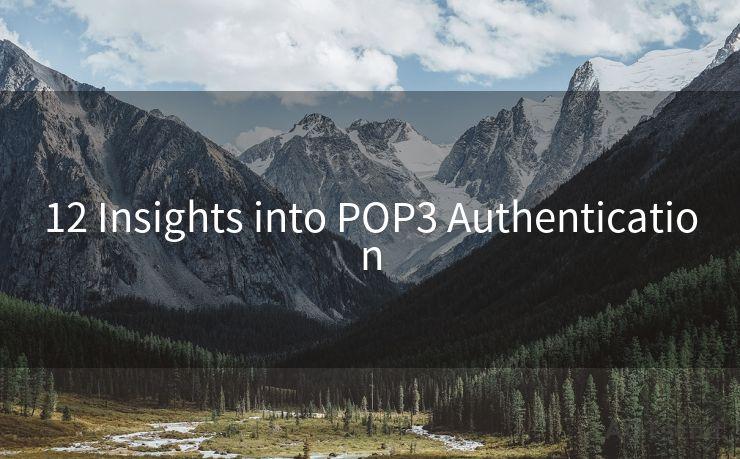12 Insights into POP3 Authentication




When it comes to email communication, POP3 (Post Office Protocol version 3) authentication plays a crucial role in securing access to email servers. Understanding POP3 authentication is essential for anyone managing an email server or using email services. In this blog post, we'll delve into 12 insights about POP3 authentication that will help you better understand its workings and importance.
1. POP3 Basics
POP3 is a standard protocol used by email clients to retrieve emails from a remote server. It allows users to download email messages to their local devices for offline reading and management. POP3 authentication verifies the user's credentials before granting access to the email server.
2. Username and Password
The most common method of POP3 authentication involves using a username and password. The email client sends these credentials to the server, which verifies them against its records. If the credentials are valid, the server grants access to the user's email account.
3. Encryption Importance
Security is paramount in POP3 authentication. It's crucial to ensure that credentials are transmitted securely to prevent unauthorized access. Encryption protocols like SSL/TLS should be used to protect the authentication process and subsequent email transmissions.
4. Port Numbers
POP3 typically uses port 110 for unencrypted connections and port 995 for SSL/TLS encrypted connections. Knowing these port numbers is essential for properly configuring email clients and servers.
🔔🔔🔔
【AOTsend Email API】:AOTsend is a Managed Email Service for sending transactional emails. Support Email Types: reminders, authentication, confirmations, notifications, verification codes, invoices, password resets, account activations, billing statements, two-factor authentication (2FA), and one-time passwords (OTP) emails, etc. $0.28 per 1000 Emails. 99% Delivery, 98% Inbox Rate.
You might be interested in:
Why did we start the AOTsend project, Brand Story?
What is a Managed Email API, How it Works?
Best 25+ Email Marketing Platforms (Authority,Keywords&Traffic Comparison)
Best 24+ Email Marketing Service (Price, Pros&Cons Comparison)
Email APIs vs SMTP: How they Works, Any Difference?
5. Authentication Methods
In addition to the basic username and password method, POP3 supports various authentication mechanisms like APOP (Authenticated POP) which uses a hashed version of the password for added security.
6. Session Management
Once authenticated, POP3 maintains a session for the user, allowing them to retrieve and delete emails. Proper session management ensures that the connection remains secure and is terminated properly.
7. Error Handling
During the authentication process, various errors can occur, such as invalid credentials or server issues. POP3 has standard error codes and messages to help troubleshoot and resolve these issues.
8. Compatibility Issues
Not all email servers and clients fully support POP3, especially its encryption and authentication features. It's important to check compatibility before setting up POP3 authentication.
9. Security Vulnerabilities
Like any other protocol, POP3 has faced security vulnerabilities in the past. It's essential to keep the server software up to date to mitigate these risks.

10. Alternatives to POP3
While POP3 is widely used, there are alternatives like IMAP (Internet Message Access Protocol) which offer more advanced features like two-way synchronization between server and client.
11. Mobile Device Support
Most modern mobile email clients support POP3 authentication, making it easy to configure email accounts on smartphones and tablets.
12. Future of POP3
With the advent of more advanced protocols, the future of POP3 might be limited. However, its simplicity and widespread support make it a viable option for many users.
In conclusion, POP3 authentication is a crucial component of email communication, offering a secure way to access email servers. By understanding these 12 insights, you can better manage and troubleshoot POP3 authentication issues, ensuring smooth and secure email access.




Scan the QR code to access on your mobile device.
Copyright notice: This article is published by AotSend. Reproduction requires attribution.
Article Link:https://www.mailwot.com/p1423.html



